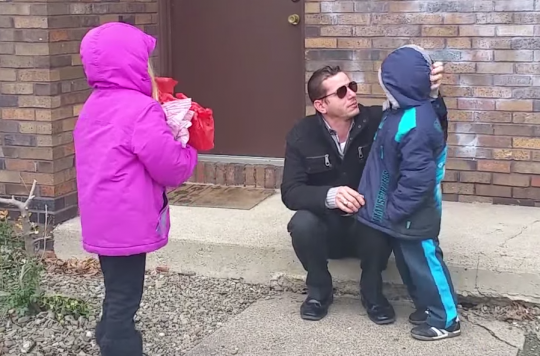Thanks to glasses with special lenses, a young American discovered the colors that surround him, including those of his children’s eyes.

There are birthday gifts that matter more than others. It is not Opie Hughes, an American color blind since birth, who will say the opposite.
In the package he receives at his home, a pair of glasses made especially for people with this pathology to allow them to distinguish colors.
Filmed by her sister, Opie can’t believe it and seems a little lost when she discovers this new world around her. It is when he finally discovers the color of his children’s eyes that the young man bursts into tears.
Glasses bought thanks to crowdfunding
In fact, it was Opie’s sister, Katherine, who wanted to give this gift to her brother. Some time before her birthday, she had set up a campaign of crowdfunding in order to collect the 300 dollars that this miraculous device costs. A great investment when you see the emotion that these glasses provide to the young dad. “My life has been seriously turned upside down more than once because of my inability to distinguish colors,” Opie says on her Facebook page. While the couple could not afford such an expense, solidarity, conveyed by the Internet, made it possible to change their life.
The pair of glasses, made by the Californian company EnChroma, is equipped with corrective lenses specially made for color blind people. Their mission is to modify the perception of colors by people with this pathology. In fact, this device was created completely by chance by the founder of this company.
When he had borrowed glasses normally used in laser surgeries from a comrade, Don McPherson found that the prism of the colors visible thanks to them was much stronger than with conventional vision.
A pathology that affects millions of people
In France, there are approximately 2,700,000 people with color blindness, an anomaly in the cones of the ocular retina which causes a deficiency in color perception.
Recently, an American study of 4000 children aged 3 to 6 years confirmed that white-skinned boys are the most likely to be affected by this deficiency. Indeed, one in twenty Caucasian boys is affected by color blindness against only 3% of Hispanic-American and Asian children. There is also a gender gap as only 0 to 0.5% of girls are affected.
.















